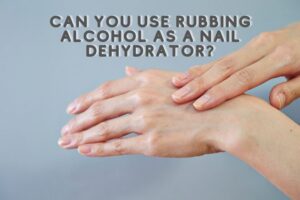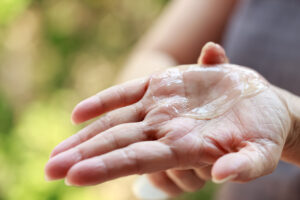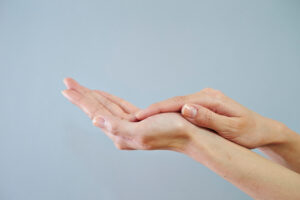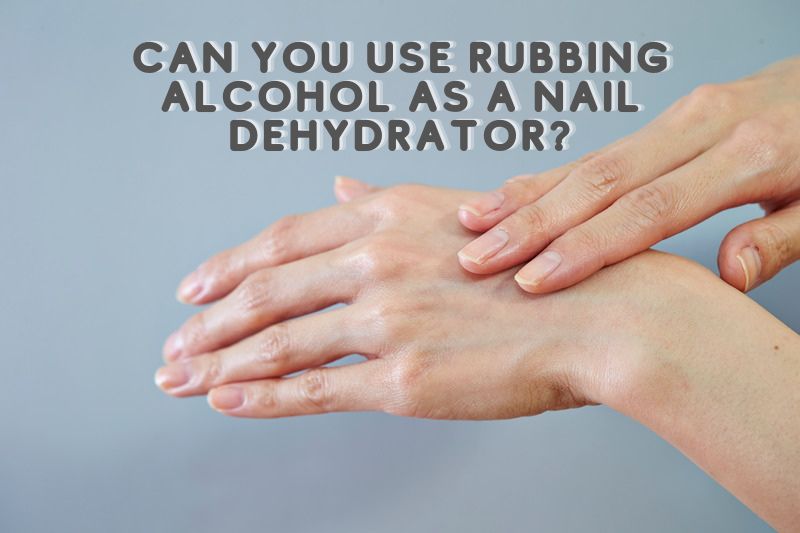Manicures are one of the most relaxing self-care treatments, and the results can be stunning. Getting your manicures at home might help you or your friend feel better. The main disadvantage to doing manicures at home is not having all the costly supplies. You can give yourself a decent manicure even if you don’t have all the equipment, but if you don’t have a nail dehydrator. You need to get one.
Getting professional nail dehydrators may be a little difficult if you are doing your nails. Many people now look for cheaper alternatives to professional nail dehydrators. People now ask: can you use rubbing alcohol as a nail dehydrator?

Yes, rubbing alcohol can be used to dehydrate nails, and the preparation of your nail removal solution is important if you aim to give yourself a professional manicure at home. Most nail dehydrators contain isopropyl alcohol (rubbing alcohol). Nail dehydrators use alcohol to strip the nail of natural oils.
This makes it difficult for fake nails to attach to natural nails. Rubbing alcohol can also help prevent fungal infections. Frequent acrylic nail wearers are more prone to fungal infection as fungus thrives in the area between your natural and fake nails. Fungus thrives in dark, wet areas.
Dehydrating your nails reduces the chance of fungus growing between your nails. Rubbing alcohol kills bacteria and fungi as well. Isopropyl alcohol kills microorganisms on your nails and nail-care products, including nail clippers, files, and polish brushes. Keeping your nails and supplies clean is the greatest way to avoid bacterial infections.
What Is a Nail Dehydrator?
If you’ve ever had your nails done professionally or have done them yourself, you know how important it is that the nail surface be dry before applying any product to it. Otherwise, there’s a risk of smudging and other complications. It’s important to know what you’re paying for when you’re at the nail salon. What exactly does a nail dehydrator do?

A nail dehydrator is a clear liquid that’s applied to the natural nail before polish or other products are applied. It works by gently dehydrating the natural nail surface in order to open up the pores and allow for easier application of products like primer and polish.
Nail dehydrators are found in many professional nail salons and are used before polishing. The process of using a dehydrator can help prevent smudging and bubbling due to excess moisture on the nails, as well as reduce the chipping that can occur with certain types of polishes.
Do You Need a Nail Dehydrator?
No, you do not really need a nail dehydrator. Nail dehydrators are not a necessity when doing your nails. But they have some amazing benefits which, in many cases, make them worth using. For example, when you remove acrylic nails, if you leave them on too long, it can cause your natural nails to lift up as well. So an acrylic nail dehydrator will help to keep the moisture in your natural nail so that it does not lift up with the acrylic nail. Also, with regular nail polish and gel polishes, there is a “sink” effect which when used with a dehydrator helps to prevent.
Why Use a Nail Dehydrator?
A nail dehydrator helps to clean your nail plate surface and get the polish to bond with the nails. When you’re using gels to paint your nails, it’s important to have a clean surface to work with. While the surface of your nail is usually a lot cleaner than you think, in some cases, like when you’ve just had a professional manicure or are in the process of getting a pedicure, there might be some dirt or oil left on it that could prevent the gel from properly bonding with the surface.
That’s why some people decide to use a nail dehydrator during their manicures and pedicures. it cleans off any natural oil or fat that may have accumulated on the nail and also helps remove any dust or bacteria that may be present.

Benefits of Using Nail Dehydrators
Salons utilize nail dehydrating solutions for more than merely removing natural oils and preventing infections. Nail dehydrators also modify the pH or hydrogen potential of your nails. The changed nail plate chemistry makes the nail bed more sticky than before.
The stronger the natural and artificial nail or polish bind, the more sticky your natural nail is. Even if you don’t use artificial nails, a nail dehydrator is required. They prevent nail polish chipping.
You can use it to smooth out any ridges in your nails so that the nail primer and polish can adhere better. Using a nail dehydrator and a nail primer together can extend the life of nail polish by weeks!
DIY Nail Dehydrator. Can You Use Rubbing Alcohol as a Nail Dehydrator?
In this section, you will learn how to make your own dehydrator. The two main elements in nail dehydrators are acetone and isopropyl alcohol. Find an old, used nail polish brush. The brush must be clean and not intended for use with nail polish. Acetone can clean a simple nail polish brush. Rubbing alcohol is required for gel paintbrushes. Cleaning acrylic polish brushes requires a monomer. Once your brush is ready, carefully coat your nail with rubbing alcohol. You should use the purest rubbing alcohol you can find for optimal results.
Using pure alcohol prevents fungal and bacterial infections better than most nail-dehydrating remedies. Ensure that all rubbing alcohol has evaporated before proceeding to the next step.
Now for the acetone:
- Apply acetone to the same finger using the same brush.
- Wait until the acetone has evaporated before doing anything else to your nails.
- After the wait, your nails are ready for any product you desire to apply.
- If you want to experiment with nail art alchemy, you may make your own homemade nail dehydrator.
- Make sure the acetone is in a firmly sealed bottle that the acetone won’t eat away at. Acetone eats plastic.
- An old, clean glass nail paint bottle is ideal for your homemade nail dehydrator.
- Use a 1:1 acetone to isopropyl alcohol ratio for your concoction.
Are Nail Dehydrators Bad for You?
No, nail dehydrators are not necessarily bad, only if used incorrectly. Most artificial cosmetic solutions can be bad, and nail dehydrators are no exception. Every aspect of your body needs moisture. Your nails are the same. Nails that are regularly deprived of their natural oils and moisture become thin and brittle.
So, what do you do when you need to dehydrate your nail to avoid infection, but your nail needs moisture to keep healthy? First, you take a break from nail polish and fake nails. Then, using a nail hardener and moisturizer helps speed up the healing process.
Nail hardeners are helpful for those with weak nails. However, overuse of nail dehydrators might lead to brittle nails. You do have to be afraid about your nails becoming excessively hardened if you use a hardener between paint sessions.
If you frequently peel your nails, try a nail hydrator. Unfortunately, nail lotion doesn’t last as long as nail hardeners, so you need to use them more often.

How to Rehydrate the Nails After Using a Nail Dehydrator?
The dehydrator is used to dry out the nails for a long time. It is necessary to use a nail rehydration lotion after using the nail dehydrator.
That’s why we prepared some tips for you on how to make your nails healthy again.
Tip1:
Use a lotion with a large amount of vitamin E and biotin. This will help your nails regenerate faster, which is essential since they just have been exposed to dangerous chemicals. Apply these lotions or moisturizing creams to the nails and rub them in. This will help to rehydrate the skin around the nails.
Tip2:
Soak your hands in warm water for a few minutes. The warmth will help to relax the muscles and improve blood circulation. Massage your nails with a nourishing nail cream on a regular basis. Use it in the morning and in the evening before you go to sleep. Always apply hand cream after soaking your hands in warm water. This will soothe dry, cracked skin.
Tip3:
Drink enough liquids (water and fruit juices). It is good for your skin and nails as well because water helps them to stay hydrated and healthy. You should drink at least one liter of water daily.
Tip4:
Cut your nails to an appropriate length every two months or so. If your nails are too long, they can break more easily but also split if they are too short.
Tip5:
Do not bite your nails because it can cause extreme damage to them and make them look unattractive.
Tip6:
Avoid doing household chores that require you to use harsh chemicals on your hands because they can dry out your nails again.
Is Nail Primer the Same as Nail Dehydrator?
No, a nail primer is not the same as a nail dehydrator. A nail primer is not the same thing as one. You can use a nail dehydrator to get rid of extra oils and moisture from your nail bed so that the acrylic or gel can stick better. A nail primer goes on after the nail dehydrator, and its main job is to make the acrylic or gel stick to your natural nail. It also puts on the first layer of polish, which makes the nail look more even on the surface.
Do You Need a Nail Dehydrator for Gel Nails?
No, you do not need a nail dehydrator for gel nails but it is beneficial if you apply for gel nails. Gel nails are very fragile and can break easily. A nail dehydrator allows you to get the most longevity out of your gel nails. The dehydrator will keep your nails from drying out and it will prevent cracking, peeling, and chipping.
Can You Use Nail Polish Remover as a Dehydrator?
People use nail polish remover all the time to take off nail polish, but it can also be used as a nail dehydrator. However, this is only true for pure acetone, not for any other types of removers. Nail polish remover with other ingredients besides acetone does not work as a nail dehydrator.
Does Acetone Dehydrate Nails?
Yes, acetone dehydrates nails. However, it must be pure acetone, or else it might not work.
Do You Need a Dehydrator for Acrylic Nails?
No, you do not have to use dehydrators for acrylic nails, however, it is recommended that you use nail dehydrators. This is because they make your manicure last longer.
Can I Use Hand Sanitizer to Dehydrate My Nails?
No, it is not recommended to use hand sanitizer to dehydrate your nails. Moreover, hand sanitizer will not dehydrate enough as you want.
Will Rubbing Alcohol Mess up My Nails?
No, rubbing alcohol will not mess up your nails. In fact, they are good nail dehydrators. However, make sure to always remember to rehydrate after using them.
Conclusion
Your nails are important, and taking good care of your nails is good for your health. Infections and nail damage can result from improper nail care. In addition to preventing fungal infections, nail dehydrators aid in product adhesion.
You can even use rubbing alcohol instead of nail-dehydrating products to dry off the natural oils. Nail dehydrators are great for giving your home manicures a professional look. Remember always to give some time between manicures to allow your fingers and fingernails to heal appropriately.
Is rubbing alcohol safe for nails?
Rubbing alcohol is generally safe for nails when used in moderation. It can be used to clean the nail surface, remove oils, or disinfect the nails. However, excessive or prolonged use of rubbing alcohol can cause dryness and damage to the nails and surrounding skin. It is important to use it sparingly and moisturize the nails afterward to maintain their health and strength.
Does alcohol work as a dehydrator?
Yes, alcohol can act as a dehydrator. It has a drying effect on surfaces by evaporating quickly and removing moisture. That’s why it is commonly used in products like hand sanitizers, where the goal is to reduce the presence of moisture on the skin.
Is acetone or alcohol better to dehydrate nails?
Acetone is generally more effective than alcohol in dehydrating nails. Acetone is a strong solvent commonly used in nail polish removers. It can effectively remove oils and moisture from the nail surface, creating a clean and dry base for nail polish application.
Does rubbing alcohol dry nails faster?
Rubbing alcohol can help in drying nails faster due to its high evaporation rate. When applied to wet nails, rubbing alcohol evaporates quickly, which can aid in speeding up the drying process. However, it’s important to note that excessive or frequent use of rubbing alcohol can cause dryness and damage to the nails and surrounding skin.


